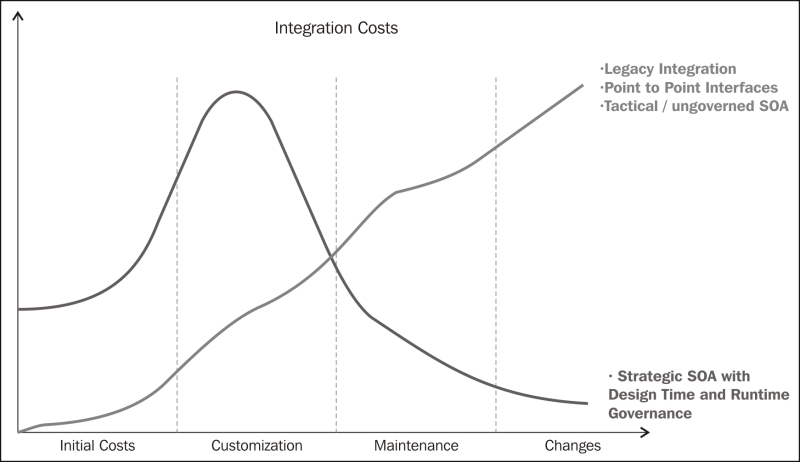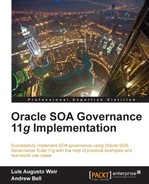Based on the feedback from the board of directors, the new CIO of Weir & Bell Telecom placed the monitoring and measurement of critical success factors and business metrics at the heart of the architectural effort. By aligning the IT strategy with the business strategy and being able to report back to the board on the return on investment for IT-related projects, he would be able to demonstrate the effectiveness of IT across the enterprise. The key here was to prove that the use of SOA would result in significant cost savings while also increasing development productivity and reducing software maintenance costs. The resulting performance improvements were expected to have a significant impact on business agility and enable the organization to respond quickly to competitive challenges.
The critical success factors for the architectural effort were heavily reliant on the fact that development and support costs would be reduced by enforcing governance, most notably in the reuse of existing SOA assets. The reasoning behind this proposition is explained in the following paragraphs.
A SOA asset's estimated value is based on the development costs avoided by reusing rather than recreating. By reusing existing assets, an organization avoids both the costs of repeatedly developing the same functionality and the cost of maintaining different implementations of the same functionality. Thus, re-use consolidates functionality and reduces redundancy. The more that re-use occurs, the greater the savings as the diagram suggests.

The difference between the time a developer would spend building an asset for single use and the time needed to use a reusable version of that asset is referred to as Predicted Net Hours Saved. This represents the development cost avoided through re-use of the asset. The following formula was used to make these calculations:

Establishing the expected ROI of assets within the portfolio requires consideration of the annual usage of each asset, and the conversion of the total Predicted Net Hours Saved to a monetary value.
An enterprise registry/repository with the appropriate capabilities is essential in tracking progress towards organizational SOA and re-use goals. It should be utilized to track each Asset's value, state (defined, designed, implemented, upgraded, and retired); then, as Assets are used, the registry/repository should gather the necessary data to generate reports that details an Asset's value. This provides a way for organizations to compare the estimated ROI to the actual returns in an SOA initiative.
While reusable assets may vary in their size, scope, and purpose, their estimated valuation and the accurate reporting of their actual value are essential in guiding SOA Governance efforts to ensure sustainable alignment with business goals.
SOA Governance is essential for increasing the value of assets by insuring their alignment with and support of policies and standards as established at the architectural, IT, and corporate levels.
An asset's value is determined not solely by its reusability or re-use, but also by the contribution it makes in moving the organization toward its business goals. To that end, the importance of effective SOA lifecycle governance in guiding the design, development, support, and retirement of assets cannot be overstated.
